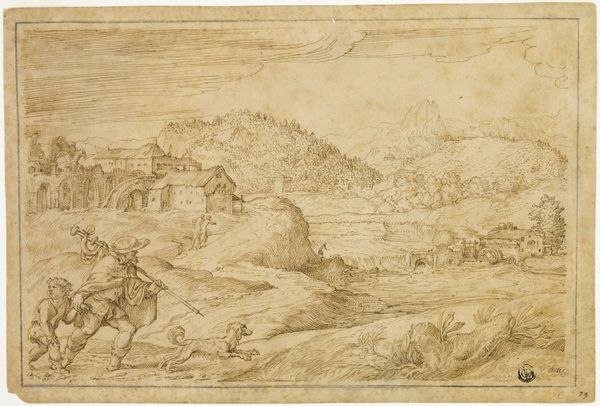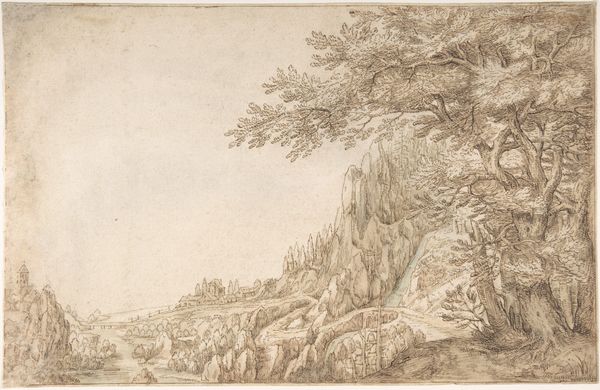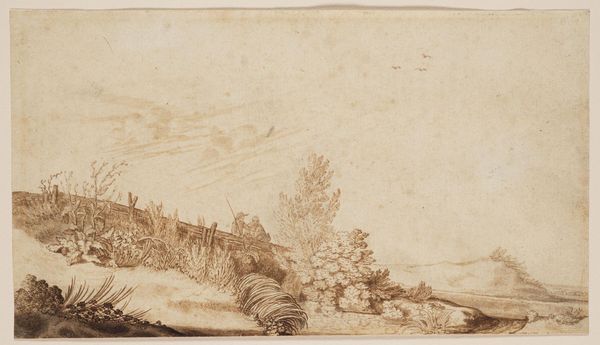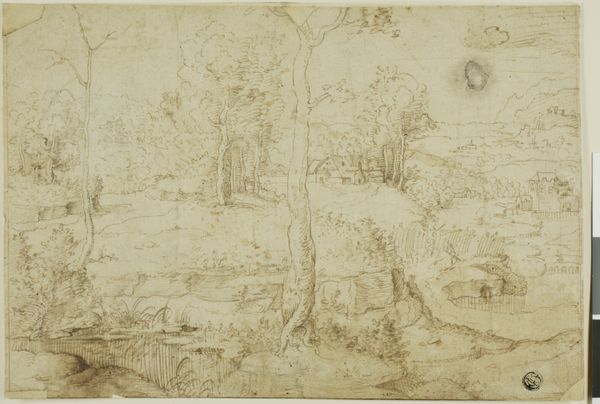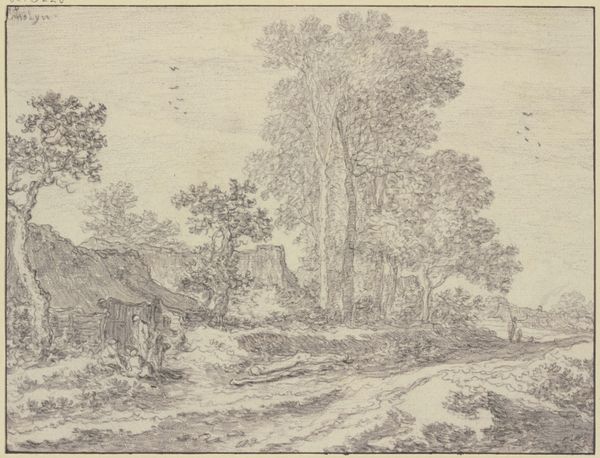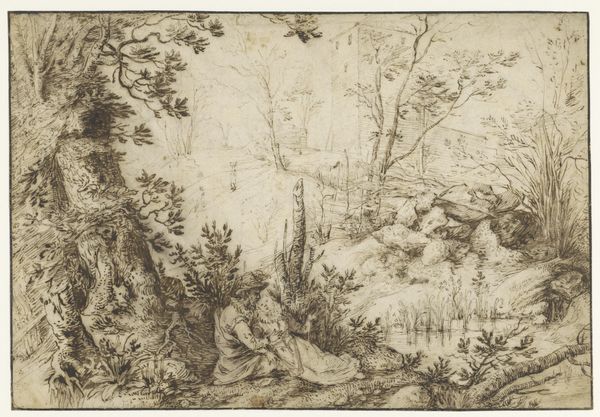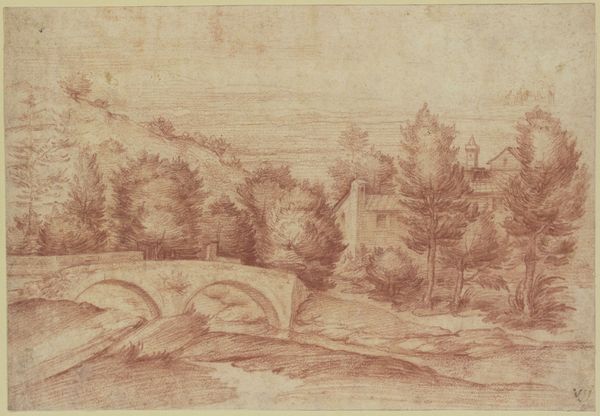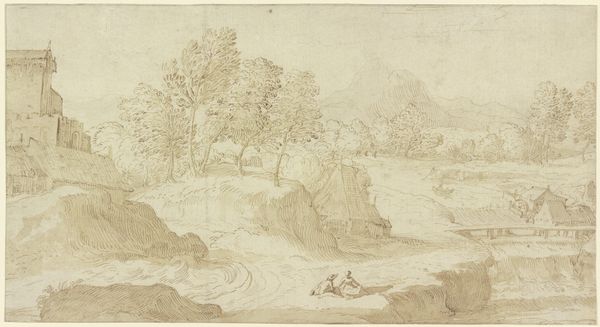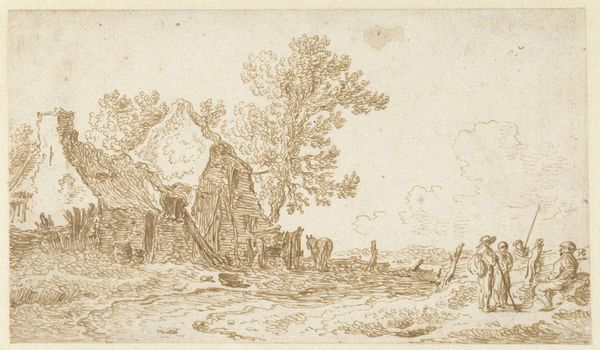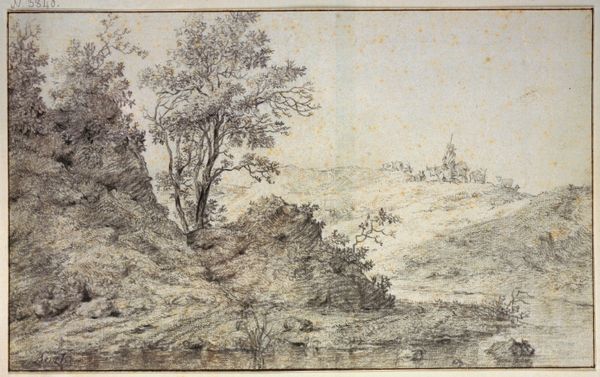
drawing, ink
#
drawing
#
baroque
#
landscape
#
form
#
ink
#
line
#
realism
Copyright: Public Domain
Curator: Here we have "Mountainous Landscape with Waterfall," a drawing by Roelant Savery. Editor: Immediately, I’m struck by how ethereal it feels, almost like a memory fading at the edges. The lines are delicate, creating a dreamlike atmosphere. Curator: Indeed. Savery used ink, that allows us to consider the labor involved in producing these detailed lines, the slow build-up of tonal values. But I wonder about the type of ink employed; that choice dictates how the lines degrade over time. Its placement within the Baroque tradition underscores the patrons’ evolving taste for meticulously crafted landscapes and natural studies. Editor: Absolutely, and that detail is so evocative! Look at how the rushing waterfall is depicted almost symbolically. Water carries heavy meaning through history: cleansing, rebirth, the passage of time… Its central placement suggests this work isn't *just* a landscape. Curator: The scene depicts a watermill nestled by the fall. Were the watermills a popular scene at the time? What social role did it occupy and is this scene an idyllic view? I'm compelled to consider how this scene idealizes or perhaps even obscures the daily work of 17th century manual labor. Editor: That is interesting! Considering the prominence of the bridges, it perhaps symbolize connections and transitions – bridging the natural and man-made, perhaps. Are the small figures, crossing, embarking on journeys? Or more permanent migrations to a new life? Curator: A deeper dive into Savery's patronage network may shed more light on this scene. Understanding how the cost and acquisition of this material would've cemented specific societal roles. Who was afforded access, who were excluded? Editor: Such great points to consider regarding the context in which this scene existed and its interpretation! Seeing it now, it feels both deeply personal, as it conveys emotions from natural symbols, and detached, a snapshot into past realities of resource accessibility. Curator: Yes! It truly offers an interesting glimpse into labor conditions by those both visible and hidden throughout art history. Editor: It’s a good reminder that visual interpretation shifts over centuries, with new discoveries emerging. Thank you.
Comments
No comments
Be the first to comment and join the conversation on the ultimate creative platform.
